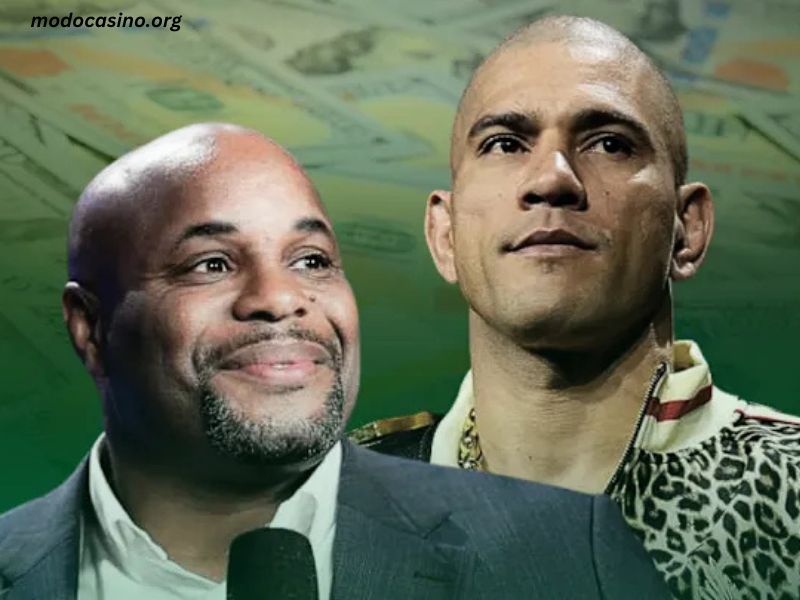The world of mixed martial arts (MMA) has captured the attention of millions, with the Ultimate Fighting Championship (UFC) being the premier organization that showcases the top talent in the sport. UFC fighters often become household names, earning respect for their incredible skills, dedication, and fearlessness. However, one of the most frequently asked questions by fans, analysts, and aspiring fighters is, “How much do UFC fighters get paid?”
The payment structure in the UFC is multifaceted, with a variety of factors influencing the salary of each fighter. From base pay to performance bonuses, sponsorship deals, and pay-per-view shares, UFC fighters’ earnings can vary dramatically depending on their experience, popularity, and success in the cage. In this article, we’ll break down how UFC fighters are compensated, explore the factors that affect their earnings, and provide insight into the general range of pay across different levels of competition.
The Basic Pay Structure: Base Salary and Win Bonuses
At its core, UFC fighters are paid based on their individual contract, which typically includes a “base salary” and a potential “win bonus.” The base salary is the guaranteed amount that a fighter earns for showing up to a fight, regardless of the outcome. This salary is negotiated by the fighter’s management and can vary depending on their experience, past performances, and marketability.
For fighters at the lower end of the roster, the base salary can start as low as $12,000 to $12,500 per fight. This is the amount a fighter will receive for simply making the walk to the octagon and participating in the event. However, this base salary often comes with a “win bonus,” meaning the fighter earns an additional payout if they win the fight. For example, a fighter earning a base salary of $12,000 may also receive an additional $12,000 for winning the fight, bringing their total earnings for the event to $24,000.
As a fighter’s career progresses and they gain more experience and exposure, their base salary can increase significantly. Veteran fighters or those with higher rankings in the division can earn considerably more. For top-ranked fighters in the UFC, base salaries can range from $50,000 to $200,000 or more per fight, depending on their contract negotiations and popularity.
Performance-Based Bonuses: UFC’s Incentive Structure
In addition to base salary and win bonuses, UFC offers performance-based incentives that further boost a fighter’s paycheck. One of the most notable performance bonuses is the Fight of the Night and Performance of the Night bonuses. These bonuses are awarded to fighters who deliver exciting, memorable performances during the event.
- Fight of the Night: This bonus is awarded to the two fighters who participate in the most thrilling and competitive fight of the event. Each fighter receives a bonus of $50,000 for this accolade, which is in addition to their regular salary and win bonus.
- Performance of the Night: Fighters who showcase extraordinary skill, finish their opponents decisively, or display incredible athleticism may earn the Performance of the Night bonus. Each winner receives $50,000, which can be awarded to multiple fighters on a single event card.
These performance bonuses are intended to incentivize fighters to put on exciting fights, which benefits both the fighters and the UFC by attracting fans and increasing pay-per-view sales. Some fighters, especially those with knockout power or exciting fighting styles, may frequently earn these bonuses, significantly boosting their earnings.
Pay-Per-View Shares: The Big Money for Superstars
The real financial gains in the UFC come when a fighter becomes a significant draw in terms of ticket sales, media attention, and, most notably, pay-per-view (PPV) sales. Top-tier UFC fighters, especially those in the main event of major pay-per-view cards, have the opportunity to earn a share of PPV revenue in addition to their salary and bonuses. This is where the highest-earning fighters make their big bucks.
While the exact amount fighters earn from PPV shares is not always publicly disclosed, it is widely understood that top-tier fighters can earn a significant portion of the revenue from PPV sales. The UFC has established a system where fighters receive a percentage of the profits based on their ability to sell tickets and generate interest in the event. Typically, the percentage ranges from 5% to 20% of the total PPV revenue.
For example, if a pay-per-view event generates $10 million in revenue, a fighter with a share of 10% would earn $1 million on top of their base salary, win bonus, and any performance bonuses. However, this kind of payday is reserved for fighters with a significant following, a big presence in the media, or those involved in the most high-profile fights.
Fighters like Conor McGregor, Khabib Nurmagomedov, and Jon Jones have been known to negotiate lucrative PPV deals, earning millions of dollars per fight. Conor McGregor, for instance, has earned tens of millions from his fights, largely due to his PPV revenue share, in addition to his regular UFC pay. It is also worth noting that a fighter’s PPV earnings are often tied to their popularity, with larger draws generating more revenue for the UFC.
Sponsorship and Endorsements: External Income Streams
Beyond the UFC’s direct compensation, many fighters also benefit from sponsorships and endorsements. UFC fighters have the opportunity to secure deals with brands in a variety of industries, from clothing and equipment to fitness and nutrition products. These sponsorships can provide fighters with additional income outside of their fights.
In the past, UFC fighters were able to secure personal sponsorships that were worn during fight week and in the octagon. However, following the UFC’s exclusive deal with Reebok in 2015, the sponsorship landscape changed. The Reebok deal significantly limited individual sponsorships, as fighters were required to wear Reebok-branded gear during fights. While this deal provided some base sponsorship income, many fighters felt that it did not offer the same lucrative opportunities that they had previously enjoyed.
Since 2021, the UFC has entered into a new partnership with Venum, another major athletic apparel brand. While the Reebok deal eliminated many opportunities for personal sponsorships, the Venum deal has allowed UFC fighters to retain more of their earnings from personal deals. Fighters who are able to build strong personal brands can earn considerable income through sponsorships outside of the official UFC partnership.
The Earnings of Mid-Tier Fighters
While it is easy to focus on the earnings of UFC superstars, many fighters fall into the middle of the pay scale, earning significant but not extraordinary amounts. Mid-tier UFC fighters may earn a combination of base salary, win bonuses, performance bonuses, and some sponsorship income. These fighters often earn anywhere from $50,000 to $150,000 per fight, though this can vary depending on their popularity and experience.
It is important to note that fighters in the middle tiers are often the backbone of the UFC, providing entertaining and competitive matches that keep the organization thriving. Many of these fighters are highly skilled but may not have the star power necessary to attract PPV shares. However, they still enjoy respectable earnings relative to most professional sports.
The Earnings of Newcomers and Early Career Fighters
For newcomers and early-career UFC fighters, the pay scale is considerably lower. Fighters entering the UFC for the first time can expect to earn relatively modest salaries, typically in the range of $10,000 to $12,500 per fight. These contracts are often short-term, giving fighters the opportunity to prove themselves and earn more money through performance and popularity. A fighter who is able to make an impact early in their UFC career by securing wins and exciting finishes can quickly increase their pay through the performance bonuses, win bonuses, and a potential re-negotiation of their contract.
Are UFC Fighters Paid Enough?
While the UFC has made significant strides in increasing fighter pay over the years, many argue that UFC fighters still do not earn enough relative to the revenue the organization generates. UFC’s parent company, Endeavor, is valued in the billions, and the UFC consistently generates hundreds of millions of dollars annually in revenue from PPV sales, sponsorships, merchandise, and ticket sales.
Some critics argue that UFC fighters, particularly those lower on the card, are not compensated fairly for their contributions to the organization’s success. Many fighters, especially those in the earlier stages of their careers, often struggle to make a living wage, particularly when factoring in training expenses, management fees, and other costs associated with being a professional fighter.
Top fighters like Conor McGregor have been able to negotiate massive paydays, but for most fighters, the pay structure remains highly competitive and often insufficient for the physical and mental toll that a professional MMA career demands.
Conclusion
UFC fighters’ earnings can vary widely based on a number of factors, from base salary and performance bonuses to pay-per-view revenue shares and sponsorship deals. While fighters at the top of the card can earn millions per fight, those lower on the roster often earn much less, relying on performance bonuses and sponsorships to supplement their income. The UFC’s pay structure, while lucrative for its stars, still has room for improvement when it comes to compensating fighters at all levels fairly for their hard work, skill, and dedication.
Ultimately, the question of “How much do UFC fighters get paid?” depends on where a fighter falls within the promotion’s hierarchy, but with the right mix of talent, marketability, and luck, the financial rewards in the UFC can be extraordinary.




